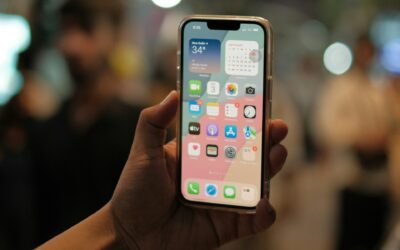As we stand on the brink of a technological evolution, the comparison between LTE proxies and the emerging 6G proxies presents a fascinating intersection of current capabilities and future possibilities. LTE proxies have long provided stable internet solutions essential for today's mobile and streaming needs. However, 6G proxies are emerging with promises of unprecedented speed and ultra-low latency, poised to disrupt traditional connectivity frameworks. What are the implications of this shift, and how will it redefine internet usage across various sectors? This exploration will unravel the nuances and potential impacts of moving from LTE to 6G.
Understanding LTE Proxies
LTE proxies are specialized networks that route internet traffic through LTE (Long-Term Evolution) connections, enabling users to harness the robust capabilities of mobile data networks.
These proxies facilitate improved access speed, reliability, and security compared to traditional internet connections.
Exploring 6G Proxies
As the telecommunications landscape evolves, 6G technology is emerging as the next frontier in proxy networking, promising unprecedented speed and connectivity.
6G proxies are set to harness the advanced capabilities of sixth-generation wireless technology, offering transformative improvements in data transfer rates, latency, and network efficiency.
Enhanced by artificial intelligence, these proxies will support seamless integration of IoT devices, enabling real-time data processing and robust cybersecurity measures.
Speed Comparison
When comparing the speed capabilities of LTE proxies and 6G proxies, the advancements in wireless technology become strikingly apparent. 6G proxies are designed to deliver data transfer speeds that far exceed those of LTE, achieving multi-gigabit rates that are expected to revolutionize internet connectivity. This leap in speed enables unprecedented possibilities for innovation and efficiency, paving the way for a connected future.
| Technology | Speed (Gbps) | Impact |
|---|---|---|
| LTE | Up to 1 | Moderate |
| 6G | 100+ | Transformative |
| LTE Proxies | Up to 1 | Limited |
| 6G Proxies | 100+ | Game-Changing |
Security Features
Although technology has advanced to provide remarkable speed enhancements, security remains a critical consideration when comparing LTE proxies and 6G proxies.
Both offer key security features:
- Encryption: Guarantees data is unreadable to unauthorized parties.
- Anonymity: Masks user identities for privacy.
- Data Integrity: Protects data from unauthorized alterations.
- Access Control: Restricts data access to authorized users only.
These features underscore their importance in secure communication.
Connectivity Differences
How do LTE proxies and 6G proxies differ in connectivity capabilities, and why does it matter? LTE proxies offer stable connections with moderate latency, beneficial for most applications. Conversely, 6G proxies promise ultra-low latency and high-speed connectivity, enhancing real-time data exchange.
| Feature | LTE Proxies |
|---|---|
| Latency | Moderate |
| Speed | Moderate |
| Real-Time Exchange | Limited |
These differences impact performance and potential applications.
Use Cases
LTE and 6G proxies each serve distinct use cases, driven by their respective connectivity capabilities.
LTE proxies are ideal for areas with established infrastructure, supporting applications like:
- Remote Monitoring: Efficient for IoT device connectivity.
- Mobile Applications: Guarantees seamless data transfer.
- Streaming Services: Facilitates stable media access.
- E-commerce Platforms: Enhances transaction reliability.
6G proxies, however, target advanced technological applications.
Future Implications
The advent of 6G technology promises transformative impacts on various sectors, with proxies playing a pivotal role in this evolution.
Enhanced connectivity through 6G will enable more sophisticated proxy applications, facilitating seamless data exchange and improved network security.
Industries like telemedicine and autonomous vehicles will benefit from reduced latency and increased bandwidth, driving innovation and efficiency.
This technological leap will redefine digital interactions globally.
Additional Insights and Data
In essence, LTE proxies currently provide stable and reliable connections suitable for a range of applications, while 6G proxies promise transformative advancements with multi-gigabit speeds and ultra-low latency. The security features of both technologies vary, with 6G expected to offer enhanced capabilities due to AI integration. Connectivity differences highlight LTE's adequacy for existing needs, whereas 6G's potential is vast, especially in sectors like telemedicine and autonomous vehicles. The evolution from LTE to 6G will substantially impact future technological landscapes.















































